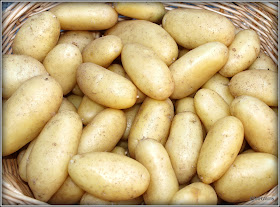Between the showers I went out to have a look around and take a few photos. I also managed to pick a few ripe "Maskotka" tomatoes.
 |
| "Maskotka" |
I took a close look at my two little plants of "Minibel" too. Having been exceptionally pale - almost white - whilst unripe, the fruit are now ripening to (or through) a sort of pink colour.
 |
| "Minibel" |
I think this is just an intermediate stage, because all the photos I have seen of this variety show deep red fruit.
 |
| "Minibel" |
The tomatoes were probably not enjoying the weather today either. They don't generally like cold wet conditions. Still, at least these are not classic Blight conditions! Most of the plants have set plenty of fruit, though it is in most cases still very green.
 |
| "Little Lucky" |
 |
| "Golden Sunrise" |
This is the one the friend who sent me the seeds labelled "Black and Green Mini", though both the plant and the fruit are anything but mini. The shape of the fruit is very reminiscent of the variety "Italian Red Pear", but of course I have no idea yet what colour these ones will turn out to be when they ripen.
 |
| "Black and Green Mini" |
At present I am watching with interest how my "Crown Prince" squashes develop. They grow very quickly, I can tell you! I have photographed this one several times and it is very apparent how much it has grown. Editing the photo I noticed that pesky snail (at base of tree), which had probably been feasting off the surrounding Parsley. I hope snails don't attack squashes...do they?
This is one of my "Vorgebirgstrauben" cucumber plants (photo taken a couple of days ago - note absence of raindrops).
 |
| "Vorgebirgstrauben" |
I have four plants of this variety, and they seem very prolific. I'm not growing them to produce mature cucumbers (other than one or two to see what they're like), but instead I am harvesting them very small - barely past the embryonic stage - in order to use as cornichons, which are basically very tiny gherkins for pickling. I don't like those, but my wife Jane loves them, so she will have the cornichons whilst I have the full-grown cucumbers.
 |
| This tiny cucumber is nearly ready for picking as a cornichon - maybe another day of growing is required... |
So, not a lovely Summer's day today, but hopefully my plants have been enjoying a good drink and the sunshine will return tomorrow???


















































